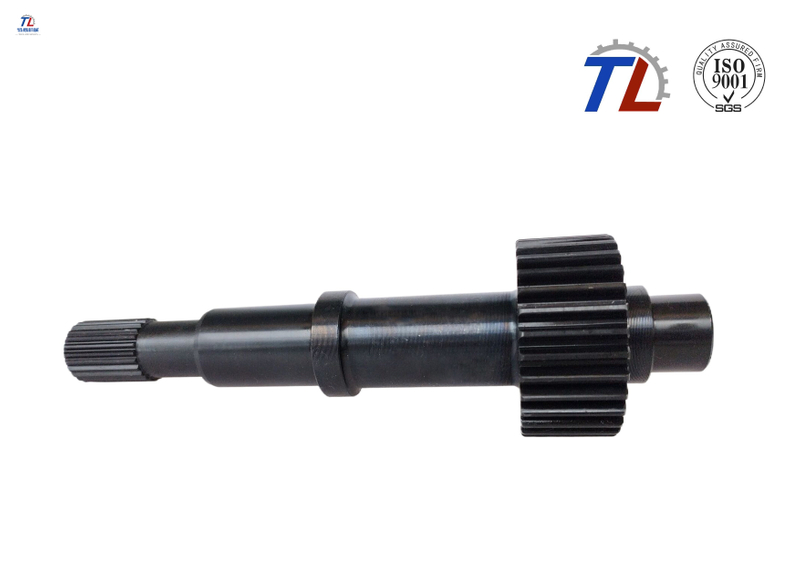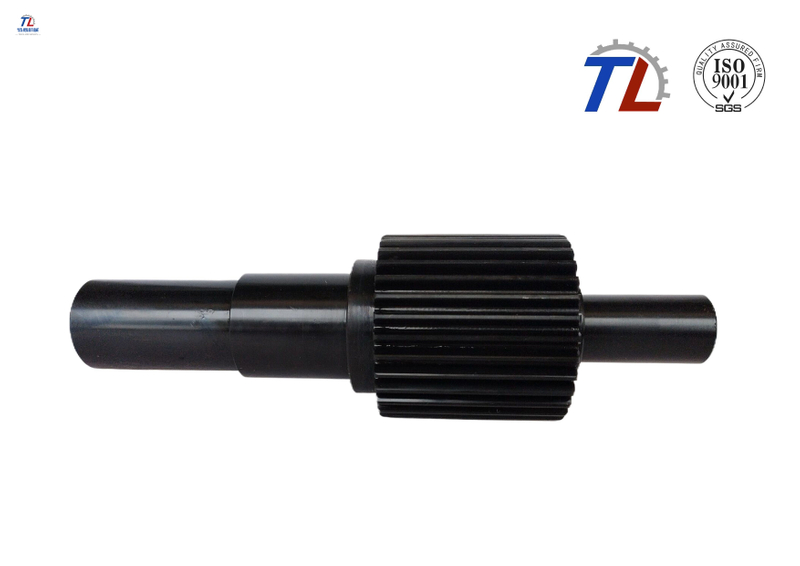- All
- Product Name
- Product Keyword
- Product Model
- Product Summary
- Product Description
- Multi Field Search
Views: 0 Author: Site Editor Publish Time: 2025-07-07 Origin: Site









In the world of mechanical engineering, choosing the right gear is crucial for the efficiency and reliability of machinery. Whether it's for high-speed systems or heavy-duty applications, gears play a significant role in transmitting power and motion between different mechanical components. However, with various types of gears available, such as spur gears, bevel gears, and helical gears, it can be challenging to determine which one is the most suitable for a particular application. In this article, we'll discuss why bevel gears are often the preferred choice over helical gears for certain applications.
Gears are an integral part of mechanical systems, used in everything from automobiles to industrial machinery. The function of a gear is to transmit rotational motion and torque from one part of a machine to another. With different types of gears designed for specific tasks, selecting the appropriate gear can significantly impact the performance, efficiency, and longevity of the machine.
Spur Gears: The most common type of gear, spur gears have straight teeth and are used for transferring motion between parallel shafts.
Helical Gears: These gears feature angled teeth that provide smoother operation and are often used in high-speed applications.
Bevel Gears: Designed to change the direction of rotation between shafts that are not parallel, bevel gears are a popular choice for applications requiring a change in the angle of drive.
Among these types, bevel gears offer several unique advantages that make them a preferred choice in many mechanical applications. Let's dive deeper into why bevel gears are often chosen over helical gears.

Bevel gears are designed to transmit motion and power between shafts that are typically at right angles to each other. The teeth on bevel gears are cut at an angle to the axis, creating a cone-shaped structure. There are several subtypes of bevel gears, including straight bevel gears, spiral bevel gears, and hypoid bevel gears, each offering distinct characteristics suited to specific applications.
Straight Bevel Gears: These have straight teeth and are most commonly used for low-speed, low-torque applications.
Spiral Bevel Gears: These gears have curved teeth that mesh more smoothly, reducing vibration and noise, making them ideal for high-speed, high-torque applications.
Hypoid Bevel Gears: Hypoid gears feature non-intersecting axes and are often used in applications that require high torque and low noise.
One of the most significant differences between bevel gears and helical gears is the way they align with the shafts they connect. Bevel gears are typically used to connect shafts that intersect at an angle, often 90 degrees, but can be designed for other angles as well. This makes bevel gears particularly useful in applications where a change in the direction of motion is required.
On the other hand, helical gears are typically used for parallel shafts. The teeth on helical gears are cut at an angle to the axis, but they do not change the direction of motion between shafts. This makes helical gears ideal for applications where the direction of rotation does not need to be altered.
Helical gears, due to their angled teeth, provide smoother operation than spur gears, resulting in reduced noise and vibration. However, when compared to bevel gears, helical gears may still produce more noise, especially in high-speed applications. This is because the teeth of helical gears engage gradually, but they do not mesh as efficiently as bevel gears in certain applications.
Spiral bevel gears, a subtype of bevel gears, are designed with curved teeth that allow for gradual tooth engagement, reducing noise and vibration to even lower levels than helical gears. This makes spiral bevel gears an excellent choice for high-speed, high-torque applications where quiet operation is essential.
Bevel gears are well-suited to handle heavy loads, especially spiral bevel gears, which have a stronger tooth engagement due to their curved shape. This results in higher load capacity and better power transmission efficiency in high-torque applications. Bevel gears also allow for the use of larger gear sizes, which can further enhance their load-carrying capabilities.
In contrast, while helical gears can handle moderate loads effectively, they are not typically used in extremely high-torque applications. The gradual engagement of helical gear teeth can also lead to increased wear and tear in heavy-load scenarios, which might reduce the lifespan of the gear.
One of the key advantages of bevel gears is their ability to change the direction of motion efficiently. In machinery where the direction of rotation needs to be altered, such as in automotive differentials or power tools like drills, bevel gears are the ideal choice. They provide a simple and reliable solution for redirecting motion between shafts that are not aligned parallel.
Helical gears, on the other hand, do not offer the same level of flexibility when it comes to changing direction. While they can transmit power between parallel shafts and handle varying loads efficiently, they are not designed for applications that require a change in the angle of drive.

Bevel gears are widely used in various industries due to their unique ability to change the direction of rotation. Some common applications of bevel gears include:
Automobiles: Bevel gears are used in the differential drive systems of cars, allowing the wheels to rotate at different speeds while maintaining smooth power transmission from the engine.
Power Tools: In power drills and other tools, bevel gears are used to convert vertical motion into horizontal motion for efficient operation.
Marine and Aerospace Applications: Bevel gears are commonly used in marine propulsion systems and rotorcraft drive systems, where high torque and precise directional control are required.
Industrial Machinery: Bevel gears are used in conveyor systems, printing presses, and other heavy-duty machinery where load-bearing capacity and direction change are essential.
While both bevel gears and helical gears have their own advantages, bevel gears are often the preferred choice when directional change, high load capacity, and reduced noise are essential. The ability of bevel gears to handle high torque loads and operate smoothly at various angles makes them indispensable in many industries, particularly in automotive, aerospace, and industrial machinery.
If you're looking for reliable bevel gears that can handle heavy-duty applications, choosing a reputable manufacturer like Guangzhou Telin Machinery Parts Co. ensures you're getting high-quality products that meet the demands of your industry. With years of expertise and commitment to precision, Telin Machinery Parts provides top-notch bevel gears that can improve the efficiency and performance of your mechanical systems.
In conclusion, while both bevel gears and helical gears offer unique advantages in different applications, bevel gears are often the go-to choice for tasks that require direction changes, high torque handling, and noise reduction. Whether you’re working in automotive, industrial, or marine applications, bevel gears offer a reliable and efficient solution for power transmission. For quality bevel gears that meet the demands of modern machinery, consider choosing Guangzhou Telin Machinery Parts Co. for your next project.
A: Bevel gears are used to change the direction of rotation between shafts at an angle, while helical gears are used for parallel shafts. Bevel gears are ideal for high-torque, directional applications, whereas helical gears are best for smooth, continuous power transmission.
A: Yes, bevel gears, especially spiral bevel gears, are designed to handle high loads and torque efficiently. They are ideal for heavy-duty applications requiring high power transmission.
A: Bevel gears are commonly used in automotive differentials, power tools, marine propulsion systems, and industrial machinery where direction changes and high torque are necessary.
A: Bevel gears are often more efficient in applications requiring direction changes, while helical gears are better suited for parallel shaft configurations. The choice depends on the specific requirements of the application.
A: When selecting a gear, consider the load capacity, direction of rotation, and speed requirements of your application. Bevel gears are ideal for directional changes and high torque, while helical gears excel in smooth, continuous motion between parallel shafts.